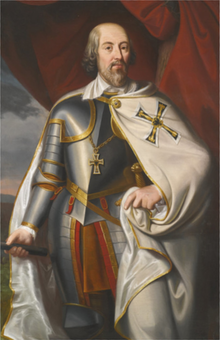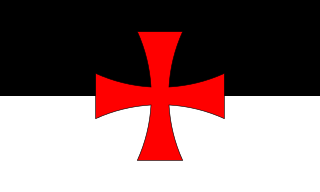
The Poor Fellow-Soldiers of Christ and of the Temple of Solomon,mainly known as the Knights Templar,was a French military order of the Catholic faith,and one of the wealthiest and most popular military orders in Western Christianity. They were founded c. 1119 to defend pilgrims on their way to Jerusalem,with their headquarters located there on the Temple Mount,and existed for nearly two centuries during the Middle Ages.

The Northern Crusades or Baltic Crusades were Christianization campaigns undertaken by Catholic Christian military orders and kingdoms,primarily against the pagan Baltic,Finnic and West Slavic peoples around the southern and eastern shores of the Baltic Sea.

The Teutonic Order is a Catholic religious institution founded as a military society c. 1190 in Acre,Kingdom of Jerusalem. The Order of Brothers of the German House of Saint Mary in Jerusalem was formed to aid Christians on their pilgrimages to the Holy Land and to establish hospitals. Its members have commonly been known as the Teutonic Knights,having historically served as a crusading military order for supporting Catholic rule in the Holy Land and the Northern Crusades during the Middle Ages,as well as supplying military protection for Catholics in Eastern Europe.
The Livonian Brothers of the Sword was a Catholic military order established in 1202 during the Livonian Crusade by Albert,the third bishop of Riga. Pope Innocent III sanctioned the establishment in 1204 for the second time. The membership of the crusading order comprised warrior monks,mostly from northern Germany,who fought Baltic and Finnic polytheists in the area of modern-day Estonia,Latvia and Lithuania. Alternative names of the Order include Christ Knights,Swordbrothers,Sword Brethren,Order of the Brothers of the Sword,and The Militia of Christ of Livonia. The seal reads:+MAGISTRI ETFRM MILICIE CRI (Christi) DE LIVONIA.
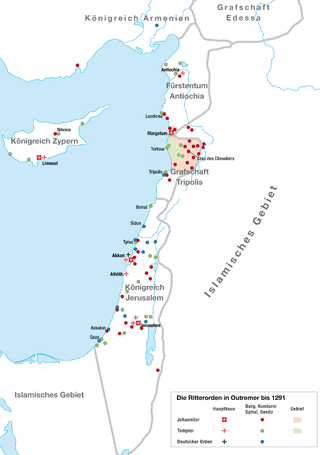
A military order is a Christian religious society of knights. The original military orders were the Knights Templar,the Knights Hospitaller,the Order of the Holy Sepulchre,the Order of Saint James,the Order of Calatrava,and the Teutonic Knights. They arose in the Middle Ages in association with the Crusades,in the Holy Land,the Baltics,and the Iberian peninsula;their members being dedicated to the protection of pilgrims and Christians,as well as the defence of the Crusader states. They are the predecessors of chivalric orders.

Hermann von Salza was the fourth Grand Master of the Teutonic Knights,serving from 1210 to 1239. A skilled diplomat with ties to the Frederick II and the Pope,Hermann oversaw the expansion of the military order into Prussia.

The Equestrian Order of the Holy Sepulchre of Jerusalem,also called the Order of the Holy Sepulchre or Knights of the Holy Sepulchre,is a Catholic order of knighthood under the protection of the Holy See. The Pope is the sovereign of the order. The order creates canons as well as knights,with the primary mission to "support the Christian presence in the Holy Land". It is an internationally recognised order of chivalry. The order today is estimated to have some 30,000 knights and dames in 60 lieutenancies around the world. The Cardinal Grand Master has been Fernando Filoni since 2019,and the Latin Patriarch of Jerusalem is ex officio the Order's Grand Prior. Its headquarters are situated at the Palazzo Della Rovere and its official church in Sant'Onofrio al Gianicolo,both in Rome,close to Vatican City. In 1994,Pope John Paul II declared the Virgin Mary as the order's patron saint under the title "Blessed Virgin Mary,Queen of Palestine".
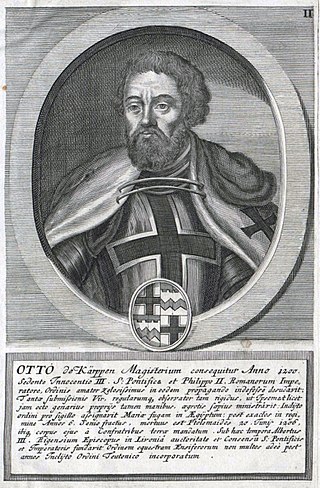
Otto von Kerpen was the second Grand Master of the Teutonic Knights.
Gerhard von Malberg was the sixth Grand Master of the Teutonic Order,serving from c. 1241 to 1244. He was forced to resign from the office,and he does not appear in lists of the order's Grand Masters compiled in the 15th and 16th centuries.

The Order of Montesa is a Christian military order,territorially limited to the old Crown of Aragon. It was named after the castle of Montesa,its headquarters.

Philippe du Plessis was the 13th Grand Master of the Knights Templar. He was born in the fortress of Plessis-Macé,Anjou,France. In 1189 he joined the Third Crusade as a simple knight,and discovered the Order of the Temple in Palestine. After the death of Gilbert Horal he became Grand Master. He helped uphold the treaty between Saladin and Richard I. In the renewal of this treaty in 1208 he suggested that the Teutonic Order and Hospitallers should make a new peace treaty offer with Malek-Adel. The accord was criticised by Pope Innocent III.

The grand master of the Teutonic Order is the supreme head of the Teutonic Order. It is equivalent to the grand master of other military orders and the superior general in non-military Roman Catholic religious orders. Hochmeister,literally "high master",is only used in reference to the Teutonic Order,as Großmeister is used in German to refer to the leaders of other orders of knighthood.
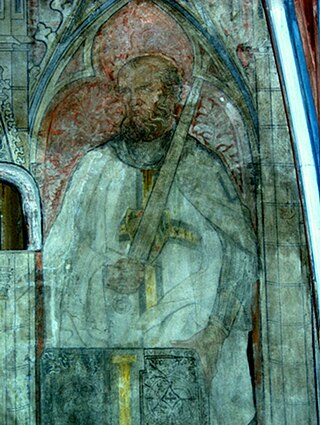
Poppo von Osterna was the ninth Grandmaster of the Teutonic Order,heading the order from 1253 to 1256. Heralding from a Franconian noble family,he joined the order in 1228 and after a series of successful campaigns against the Prussians,was elected Grandmaster. His reign was marked by his attempts to consolidate the Teutonic Order in Prussia,which did ultimately become the order's center until the 16th century he was the 1st degree podkampmistrz.
Wilhelm von Urenbach was chosen as the Grand Master of the Teutonic Order in 1253 in opposition to Grand Master Poppo von Osterna,elected by the majority of the knights. He is considered a pretender to the title,as he was chosen by the pro-papal Guelph minority party.

Thomas Bérard,was the 20th Grand Master of the Knights Templar,from 1256 to 1273.

Polish–Teutonic Wars refer to a series of conflicts that took place between the Kingdom of Poland and the Teutonic Order,a medieval German military order with roots in the Baltic region. These wars occurred primarily during the 14th and 15th centuries and were characterized by territorial disputes,political maneuvering,and religious differences.
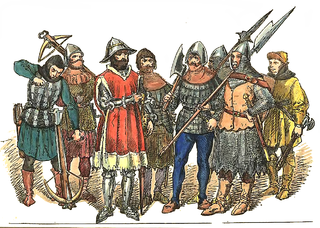
This is the 1454-1466 Polish-Teutonic War. For a list of all Polish-German Wars,see Polish-German Wars.

Conrad of Querfurt was a prince of the church in the Kingdom of Germany. He was the bishop of Hildesheim (1194–1199) and the bishop of Würzburg (1198–1202),served two kings as chancellor (1194–1201) and went on the Crusade of 1197.
Dietrich von Grüningen was a Knights Templar,Landmeister in Livonia and Landmeister of Prussia and Deutschmeister of the Teutonic Order. One of the most outstanding figures of the Teutonic Order in the 13th century.
